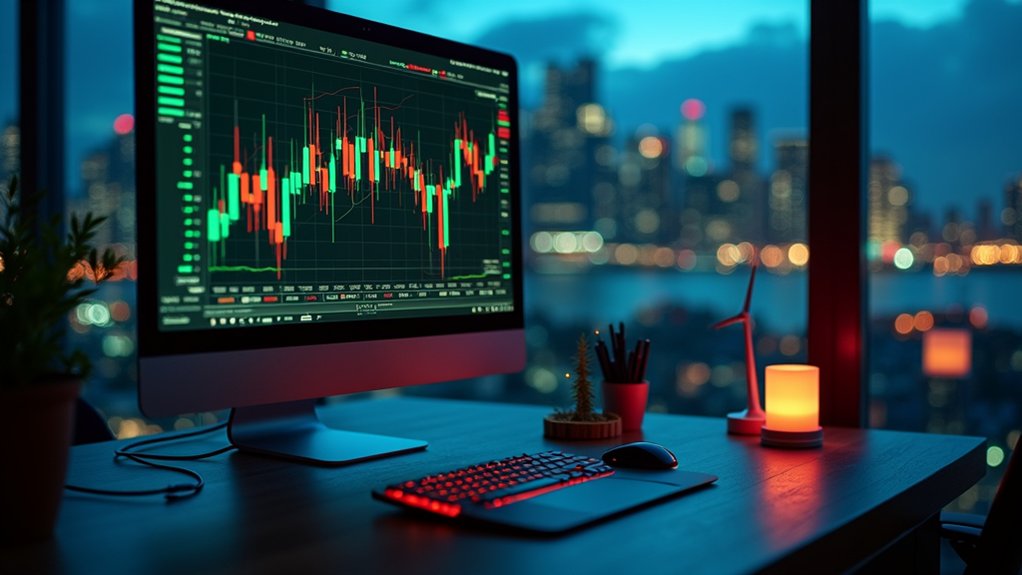Trading volume isn’t just a number—it’s the market’s raw conviction, and ignoring it is a fool’s errand that turns strategy into chaos. Analyze it by scrutinizing spikes or flatlines, which scream intent, using tools like On-Balance Volume (OBV) to confirm trends or expose reversals. Don’t guess; track patterns for accumulation or distribution, and challenge every price move with volume’s brutal truth. High activity validates strength—low, a scam. Curious? There’s more to uncover.

How often do traders, blindly chasing price action, ignore the raw, unfiltered truth of trading volume, the very pulse of market intent? It’s a reckless oversight, a glaring blind spot, that leaves so-called “savvy” investors floundering when markets turn. Volume, the raw measure of conviction, reveals what price alone conceals—whether big players are driving trends or merely feigning strength. Dismiss it, and you’re gambling, not trading, so wake up to Volume Patterns, the silent signals screaming intent, often missed by those too dazzled by candlesticks to care.
Consider this: volume isn’t just noise; it’s the market’s heartbeat, spiking or flatlining with purpose, and yet, traders skip its analysis, assuming price tells all. Wrong. Volume by price and time exposes accumulation or distribution, while Volume Patterns lay bare whether breakouts hold weight or crumble as frauds. And don’t even start with excuses about complexity—Indicator Tools like On-Balance Volume (OBV) and Volume Oscillators exist to strip away guesswork, handing you clarity if you’d bother to look. OBV, for instance, adjusts volume with price shifts, confirming trends or warning of reversals, while oscillators gauge strength through moving averages. High volume often signals strong market activity, confirming the intensity behind price movements. Moreover, volume confirmation can validate the strength of a breakout after periods of consolidation, ensuring you’re not chasing false signals volume confirms breakouts. Ignore these, and you’re just shouting into the void, hoping for wins. Additionally, tracking metrics like transaction volume across altcoin networks can reveal deeper insights into network activity trends and overall project health.
Frequently Asked Questions
What Is Trading Volume in Stocks?
Trading volume in stocks refers to the total shares exchanged between buyers and sellers in a specific period. Volume Measurement tracks this activity, while Intraday Volume focuses on transactions within a single trading day.
Why Does Trading Volume Matter?
Trading volume matters as it serves as a key Liquidity Indicator, reflecting market ease for transactions. Additionally, as a Sentiment Gauge, it reveals investor conviction and collective interest behind price movements in securities.
How Often Should Volume Be Checked?
Determining the appropriate Monitoring Frequency for trading volume is essential. Volume Scheduling should align with market events, intraday needs, or long-term trends, ensuring timely insights into market participation, sentiment, and liquidity for informed decisions.
Can Volume Predict Market Crashes?
Examining whether volume can predict market crashes, researchers note that Volume Signals often serve as early indicators. Through Crash Analysis, high trading volumes frequently correlate with increased volatility and potential market downturns.
Does Volume Affect Stock Price?
Examining whether volume affects stock price, one finds notable Volume Effects on market dynamics. Correlation Factors suggest that higher trading volumes often align with price shifts, indicating a significant relationship between these two elements.









